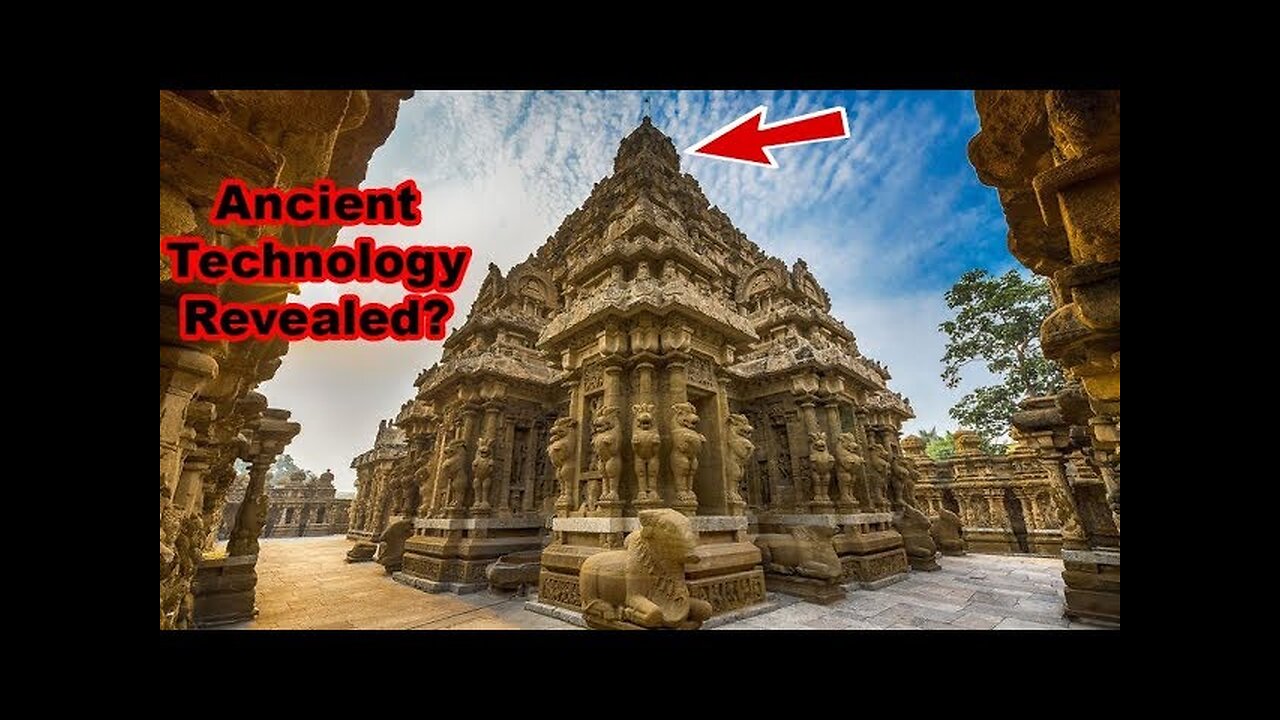Premium Only Content

Ancient Kailasa Nathar Temple was NOT built with Stones? Advanced Hindu Temple Technology Revealed
Instagram :- https://instagram.com/praveenET
Twitter :- https://twitter.com/IamPraveenMohan
Email id :- phenomenaltravelvideos@gmail.com
This is my PayPal account if you would like to support me :- https://paypal.me/hindutvawadi
0:00 - Extraordinary Rock cuts
1:38 - Strange Lattice Works
3:38 - Identical Designs
4:50 - Ancient Drilling Machines
6:02 - Today's Lattice Works
7:16 - Ancient Geopolymers
9:06 - Model for Kailasa Temple
9:50 - Proof of Geopolymers
11:38 - Spoiling Renovations
13:20 - Floating Rocks
14:10 - Conclusion
Hey guys, today we are going to look at a very different technology used many centuries ago in India. This ancient site is known as Warangal Fort and it is a massive site which is completely in ruins now. You can see that it does not look like a fort at all, but this place is called a fort because there are many levels of fortifications and defense systems around this, but they have a much larger circumference, so we can't see them from here. Today, let's specifically look at how these rocks were cut. When you first enter the site, you are amazed at the thousands of rocks that are just strewn around like piles of garbage. When you examine these rocks closely, you are amazed because ..just see how complex each block is. How were the magnificent structures created? Archeologists and historians are adamant and claim that all these structures were built using nothing more than primitive tools and hard labor. Is this true? Or did ancient builders use advanced technology and high-tech machines to accomplish this feat?
Let us take a look at these stone artifacts. They have a strange Latticework done on them and are called as Jali in India. Each Jali Stone has many holes and looks like a ventilator or a window, but these are not straight slots or round holes. Each hole has many corners. But this is not the real problem, it is quite possible to carve a hole with many corners using simple tools.
Historians and archeologists vehemently argue that ancient builders did everything with chisels and hammers and did not use rotating machines, but this site provides some solid evidence that drilling machines were used in ancient times. Here we can see a perfectly drilled hole. Do these look like chisel marks? You can see these concentric circles caused by the flutes of a drill bit. Archeologists confirm that these are in fact ancient tool marks. This is how it looks after lying in rain and shine for at least 700 years and look at how perfect it looks. Imagine how it would have looked when it was created. So we know as a matter of fact that ancient builders were using rotating drilling and carving machines, but is this how these Jalis are made? Even with mechanized carving tools, it would still be impossible to make such identical holes. So, they must have used some other kind of technology to create these designs.
To understand this, we need to look at how Jalis are made today. In India, Jali making is not only considered an ancient art, but Jalis are still widely used in rural homes even today. So, how do they make these identical designs? The answer is quite simple, they don't use hard substances like rocks, they use soft substances like clay or liquid cement and then cast them into identical pieces. For example, we can pour concrete or put wet cement into a cast and after it solidifies, it looks and feels as hard as a rock. Surprisingly, the Jali makers of India whose families have been working in this field for many centuries tell us that this is exactly the same process they have been doing for many centuries. Today, they are using concrete, but in ancient times they used some other powders or liquid material to create ancient Jalis.
Are these Jalis in Warangal Fort really made of black basalt? Or are they made of some other materials which merely look like black basalt? Today, we use materials called Geopolymers, and we use them to build various structures.
To understand this, we need to go to one of the oldest Temples in India. This temple called the Kailasanathar temple, is at least 1300 years old. Some historians believe that this South Indian Temple served as a model of the famous Kailasa Temple in Ellora Caves. While the Kailasa Temple in the North is known for its extraordinary Rock Cutting Technology, this temple in the South is famous for something very mysterious. The rocks which make up this temple are not rocks at all. According to locals in this town and the priest of this temple, these are geopolymer blocks. Listen to what the priest says..
#Hinduism #Search4Truth #AncientAliens
-
 LIVE
LIVE
Boxin
1 hour agoGrounded! part 5
128 watching -
 2:10:12
2:10:12
Badlands Media
1 day agoDevolution Power Hour Ep. 383: Epstein, Durham, and the Dictator Narrative
100K84 -
 2:40:10
2:40:10
DLDAfterDark
12 hours ago $0.51 earnedDLD Live! Feat. Red Dawn Readiness! Glock FRT's - Striker Fire Safety Concerns - ACE Trigger
46.4K8 -
 2:40:21
2:40:21
BlackDiamondGunsandGear
11 hours agoAre ALL Striker Fired Pistols UNSAFE? // After Hours Armory
56.8K16 -
 LIVE
LIVE
TheSchleppy
6 hours ago✨TheSchleppy✨EWC COUNTER STRIKE 2 GRAND FINAL *MONGOLZ v AURORA*
62 watching -
 6:34:50
6:34:50
SpartakusLIVE
15 hours ago#1 Saturday Spartoons on RUMBLE PREMIUM
131K7 -
 1:04:59
1:04:59
Man in America
16 hours ago“Summoning the Demon” — The AI Agenda Is FAR WORSE Than We Know w/ Kay Rubacek
67K56 -
 2:16:48
2:16:48
Tundra Tactical
14 hours ago $0.15 earned🎯💥 The World’s Okayest Gun Show 🔫😂 | LIVE Tonight on Rumble!
49.2K1 -
 3:36:03
3:36:03
Mally_Mouse
1 day ago🌶️ 🥵Spicy BITE Saturday!! 🥵🌶️- Let's Play: Tower Unite!
70.2K3 -
 58:59
58:59
MattMorseTV
14 hours ago $1.82 earned🔴Trump just BROKE Newsom.🔴
94.7K106